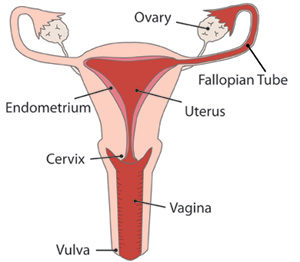Investigation of the Fallopian Tubes
There are two ways of checking that both of the fallopian tubes are open (patent) to allow sperm to reach the egg and the embryo to reach the womb. Both methods are explained below.
Hysterosalpingogram (HSG).
During this test a dye is passed through the cervix into the fallopian tubes and an X-ray of the lower abdomen/pelvis is taken. If the dye does not pass through one of the tubes further tests are usually required to determine whether the tube was in spasm (high muscle pressure) or blocked.
Laparoscopy.
This test requires a general anaesthetic. A very small telescope is passed into your abdomen (tummy) through a small cut below your belly button. The doctor can then see your fallopian tubes, womb and ovaries and visually check their appearance. The doctor will look for adhesions (where, for instance, the fallopian tube might be stuck down to another organ) and endometriosis.
Occasionally dye is passed through the fallopian tubes to see if they are patent (open).
